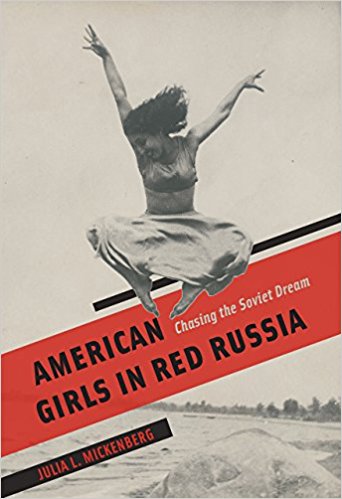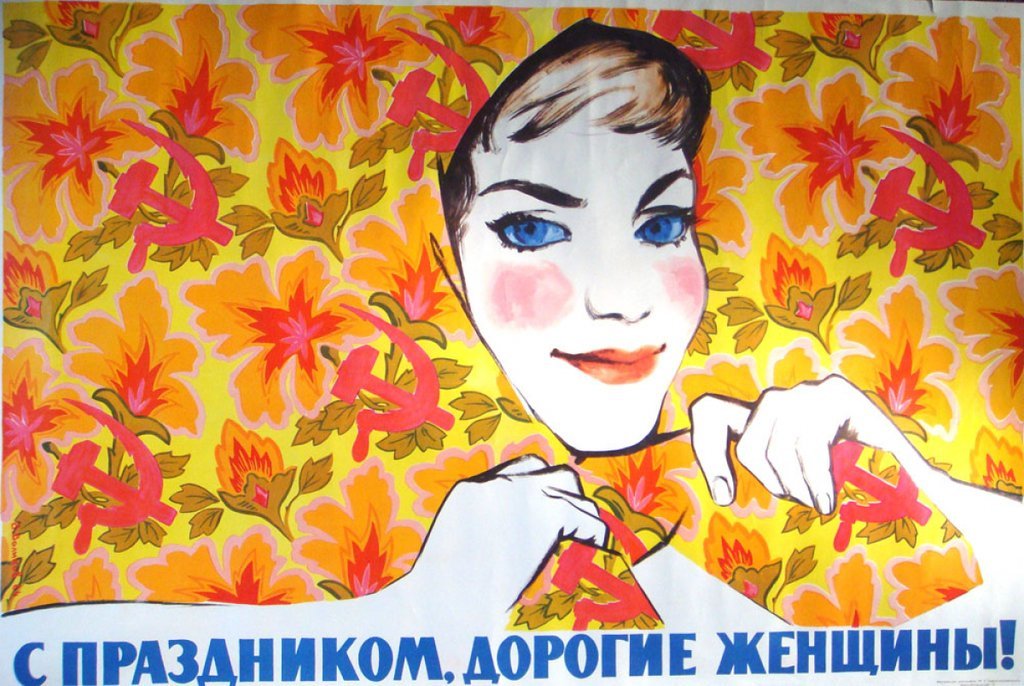Is it time to consider what socialism can mean in the bedrooms as well as in the body politic?
Is sex better under socialism? Apparently, according to an August 12, 2017 New York Times opinion piece. Did women from the United States find fulfillment in revolutionary Russia? Julia Mickenberg’s American Girls in Red Russia makes that case. As socialism continues to gain traction with millennials, it may be time to consider what that can mean in the bedrooms as well as in the body politic.
“Sex, Drugs, and Rock and Roll” was a theme of the ’60s rebellion. After all, the Baby Boomers came of age when birth control pills did. Then women’s liberation added an entirely new spin to sexual liberation.
Women’s consciousness-raising groups began reading the revelatory pamphlet, “The Myth of the Vaginal Orgasm.” Feminists in the Boston Women’s Health Collective and the Women’s Health Organization in Austin informed women about their bodies from a woman’s perspective. In 1973, the Roe v. Wade case legalized abortion. The Gay Liberation movement brought same sex relationships out into the open.
Sexual pleasure outside of marriage has always rankled the religious right.
Sexual pleasure outside of marriage and procreation has always rankled the religious right. Anita Bryant brought her rant about homosexuality to Austin in 1977, drawing a large counter protest on Auditorium Shores. We still are fending off bathroom bills in 2017 and trying to keep Planned Parenthood from becoming extinct.
At the rate things are going, it may take revolution to gain reproductive justice — decent sex education, family planning, abortion rights, prenatal care, postnatal care, and child care. Addressing the structural inequities, particularly for women of color, to reproductive healthcare will demand far more from all of us than defending legalized abortion. Does it require socialism?
Women born slightly before the raucous Baby Boom found themselves in the ’60s with less “Sex, Drugs, and Rock and Roll” and more diapers, baby rattles, and Dr. Spock (the pediatrician who wrote the bible on childcare during that era). For those women in 1963, Betty Friedan posed a question in The Feminine Mystique, “Is this all?”
Friedan spoke as a woman of privilege about the isolation of motherhood in suburbia.
The question has a quaint, middle-class Leave it to Beaver feel in today’s world. Friedan was speaking as a woman of privilege about the isolation of motherhood in suburbia. Her comments resonated among many women who helped found the National Organization for Women (NOW).
But, for those of us who began to knock open employment doors for women in the ’70s, we faced an entirely different question when we had children. The question was: “Isn’t this too much?”
The scramble to work full time and negotiate lives around childcare schedules, after-school programs, and summer camps was, in fact, daunting. And what we faced in the ’80s seems quaint now. Childcare costs alone have tripled.
In what we called the Women’s Liberation movement in the ’70s, we envisioned a world in which women’s work outside the home would benefit everyone. There would be shared responsibilities at home, shorter workweeks, time to relax, and even time for sex.
We envisioned a quality childcare system that would be affordable and accessible.
We envisioned a quality childcare system that would be affordable and accessible. In a forgotten footnote to history, the U.S. Congress passed a Comprehensive Child Development Bill, aimed at universal childcare, in 1971. In 1972, President Richard Nixon vetoed the bill, arguing against a communal approach to child-rearing that would weaken family life.
Our vision ran contrary to the capitalist vision. As women entered the workforce in large numbers in the ’70s, employers found a way to use the expanded labor force to flatten wages and work families to the breaking point. Middle-class aspirations began to require dual incomes. Single parents frequently worked more than one job to make ends meet.
This is where life under socialism provides an important contrast.
Kristen R. Ghodsee wrote about, ‘Why Women Had Better Sex Under Socialism.’
Kristen R. Ghodsee’s piece, “Why Women Had Better Sex Under Socialism,” appeared in the August 12, 2017 New York Times. She writes:
Some might remember that Eastern bloc women enjoyed many rights and privileges unknown in liberal democracies at the time, including major state investments in their education and training, their full incorporation into the labor force, generous maternity leave allowances and guaranteed free child care. But there’s one advantage that has received little attention: Women under Communism enjoyed more sexual pleasure.
A comparative sociological study of East and West Germans conducted after reunification in 1990 found that Eastern women had twice as many orgasms as Western women.
Ghodsee quotes a 65-year-old Bulgarian woman who worries about her daughter born in the late 70s:
“All she does is work and work,” Ms. Durheva told me in 2013, “and when she comes home at night she is too tired to be with her husband. But it doesn’t mater, because he is tired, too. They sit together in front of the television like zombies. When I was her age, we had much more fun.”
The same New York Times article tells the story from the perspective of a German woman in her 30s, responding to her mother’s pressure to have a baby:
She doesn’t’ understand how much harder it is now — it was so easy for women before the wall fell [referring to the fall of the Berlin Wall in 1989]. They had kindergartens and crèches, and they could take maternity leave and have their jobs held for them. I work contract to contract and don’t have time to get pregnant.
Julia Mickenberg’s ‘American Girls in Red Russia’ describes what Russia had to offer.
While Ghodsee draws a comparison between East Germany and West Germany, University of Texas professor Julia Mickenberg shines light on the motivations that propelled women from the United States to Russia after the 1917 revolution. Julia Mickenberg’s American Girls in Red Russia describes what Russia had to offer.
 Russia had granted suffrage to women in 1917, three years before women in the United States got the right to vote. Furthermore, a new Family Code legalized divorce, allowed women to own property, eliminated the category of illegitimate children, and made family leave available. (Did you hear that last one, Ivanka Trump? One century earlier!) There were publicly-funded child care centers, public laundries, and cafeterias that made working outside the home easier to integrate with family life.
Russia had granted suffrage to women in 1917, three years before women in the United States got the right to vote. Furthermore, a new Family Code legalized divorce, allowed women to own property, eliminated the category of illegitimate children, and made family leave available. (Did you hear that last one, Ivanka Trump? One century earlier!) There were publicly-funded child care centers, public laundries, and cafeterias that made working outside the home easier to integrate with family life.
U.S. women seeking adventure found a range of possibilities in revolutionary Russia — working in factories and agricultural collectives, editing newspapers, and contributing to the cultural renaissance in dance and film.
Mickenberg reveals a U.S. exile community similar to the one that thrived in Paris.
Mickenberg’s writing reveals a story rarely told, a U.S. exile community similar to the one that thrived in Paris. It is not the more familiar story of Ernest Hemingway’s Moveable Feast, but the story of women attracted to the revolutionary frontier of Red Russia.
In 1934, African-American actress, Frances E. Williams, visited Russia drawn to opportunities in film and theater. Her impression of childcare and college without debt has a current resonance. Mickenberg writes:
Because her mother had worked since the age of five as a laundress, Frances E. Williams found Soviet attention to children profoundly moving: “Schools were available for your children, even nursery schools or pre-primary things were planned so that they were near, if you worked in a factory or wherever you worked… And you didn’t have to again hoard your money and know all the right people to get your children into college and be in debt all your life.”
It is now 2017, 100 years after the Russian revolution. Many of us in the United States have been inspired, as some of us were in the 70s, by the vision of democratic socialism.
When 13 men huddled in the U.S. Senate to concoct a healthcare bill that, among other things, would eviscerate Planned Parenthood, opponents didn’t just say, “No!” They began to demand universal health care. To this demand, we must add many others.
For women, for families, for children, for everyone, we need universal health care that provides for all aspects of reproductive health. And, we should add demands for paid family leave and universal childcare. With the present in dire straits, it is definitely time to re-imagine the future.
The New York Times article skips from a study on orgasms to the societal support systems that made life easier for women in East Germany. Mickenberg’s American Girls in Red Russia gives a more nuanced view of women’s experience in revolutionary Russia — exploring affairs of the heart as well as those of the collective.
Let no one doubt that revolutionary fervor is a powerful aphrodisiac. It can provide the spark, but that spark needs to be nurtured. Societal support systems don’t sound quite so sexy — family leave, universal child care — but they can be quite exciting when they translate into less stress and more time.
[Alice Embree is an Austin writer and activist. She contributed to Sisterhood is Powerful, writes for The Rag Blog, and is a member of Democratic Socialists of America (DSA). Embree is also an editor of the book, Celebrating The Rag: Austin’s Iconic Underground Newspaper.]
- Read more articles by Alice Embree on The Rag Blog.



















Excellent article! Thanks, Alice.